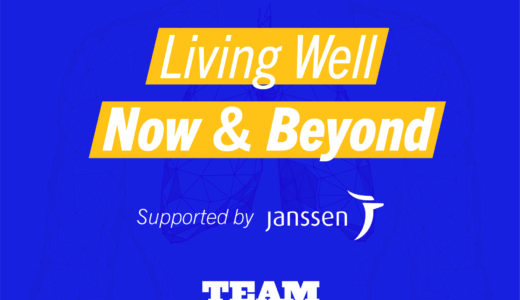Training Load: 1,440 points per rider per day
How does one train for RAAM? How do we turn our bodies into the endurance machines they will need to be? Here is another blog update on sharing tidbits on training, talking about how we’re going to get to the starting – and finish – line.
Sitting down with Gene and Sally for dinner this past Thursday at my local favorite, The Green Mango, was a true delight. We shared a bottle of wine (a crowd-pleaser red, per Gene, wine aficionado), delicious and healthy Thai food, and most of all each other’s company. The conversation began with “How was your day?” and we shared stories about life. Then as we began eating dinner, Gene’s eyes literally lit up and he said – “So Sally and I did some math.” He continued, “Do you know how many points you will need per day to race across America?”
Ah, math. Calculations. Training load.
“Points?” You might ask? Isn’t this cycling? How does one keep score, then? What does all this mean?
In endurance sports, tracking one’s data – one’s workouts – length, intensity, and how one feels with this exertion – one of the most important aspects of training. There are many ways to do this, but keeping a training log is vital to improvement. As Sally and many espouse, you have to record data in order to measure improvement. The culmination of individual workouts comes together in training load, which Sally has called LIFT. Load = Intensity + Frequency + Time. Measuring frequency (how many times per week), and time (how many minutes per workout) are perhaps obvious. But how, exactly, does one measure intensity of one’s exertion?
There are a few systems to measure intensity, and those of us who have trained using other proprietary software programs are familiar with acronyms like TSS, ATL, TSB. But Sally and Gene have given us another tool in our training toolkit. And, in my opinion, having multiple tools to track and analyze our data, helps us to understand where we are and where we’re headed.
Sally developed the Heart Zones system, a patented system for quantifying different intensity levels in training, all centered around the heart rate monitor. She began using a heart rate monitor (HRM) many years ago in her own training as a world class endurance athlete, and has become passionate about using the HRM as one’s own “personal coach,” quantifying exertion and allowing one to train in different zones (low heart rate zones for base-building and recovery, middle zones for aerobic fitness, and the high (red) zone to hit anaerobic exercise and make some major gains if you are a competitive athlete. Working with Carl Foster, PhD and Professor in Exercise and Sport science at the University of Wisconsin, she has incorporated the Foster Talk Test as a means to set two thresholds. She also has several other ways of estimating thresholds, but the Foster “Can You Speak Comfortably” Talk Test (a field test of breathing during incremental exercise) has been validated in multiple populations, from untrained to well-trained athletes. So using this test (and more on this in a future post), one is able to find anchor points – thresholds – around which to center their training.
 Sally has defined 5 zones of training – Zone 1 (Healthy Heart), Zone 2 -Temperate (Below the 1st threshold), Zone 3 – Aerobic, Zone 4 – Threshold, and Zone 5 – Red Line. These are based on each athlete’s individual tests rather than maximum heart rate (220-age), because the truth is, everyone’s maximum heart rate is different, and that equation is extremely inaccurate. My maximum heart rate is different than my teammates’ and it has not decreased over the past several years as that formula would predict. In addition, each athlete’s thresholds (those anchor points) are dynamic, and change with training. So knowing one’s own zones allows each athlete to have a specific training regimen suited to their body and their heart. (For more on zones, Sally has written several books, including the The Heart Rate Monitor Guidebook, and Zoning Fitness in a Blink.)
Sally has defined 5 zones of training – Zone 1 (Healthy Heart), Zone 2 -Temperate (Below the 1st threshold), Zone 3 – Aerobic, Zone 4 – Threshold, and Zone 5 – Red Line. These are based on each athlete’s individual tests rather than maximum heart rate (220-age), because the truth is, everyone’s maximum heart rate is different, and that equation is extremely inaccurate. My maximum heart rate is different than my teammates’ and it has not decreased over the past several years as that formula would predict. In addition, each athlete’s thresholds (those anchor points) are dynamic, and change with training. So knowing one’s own zones allows each athlete to have a specific training regimen suited to their body and their heart. (For more on zones, Sally has written several books, including the The Heart Rate Monitor Guidebook, and Zoning Fitness in a Blink.)
 Gene has been working with Sally to take her system and create a program for cyclists that involves a web-based program called Ride Journal, which “talks to” the iPhone-based Ride Buddy. These programs help calculate training load by assigning points to each zone. So spending time in zone 1 gives you 1 point for every minute, zone 2 gives you 2 points, zone 3 gives you 3 points, zone 4 gives you 4 points, and zone 5 gives you 6 points. Early in the season (now), when athletes are base-bulding, we spend more time in the lower zones – easier runs, easier rides, at a zone where you feel like you could ride all day. As training progresses, more time is spent in the aerobic, threshold, and lactate-loving red line zones. All these data can be tracked from a HRM strap via Bluetooth or ANT+ technology to the iPhone’s Ride Buddy, so we can see in real time what zone we are in, whether it is low, middle or high part of that zone, and the amount of time in the zone. For indoor trainer rides, this helps immensely in keeping track and making sure appropriate percentages of our training fall into their respective zones. In addition, Ride Buddy and Ride Journal use an algorithm to calculate the “points” per workout, a marker to track our training load. So back to the points.
Gene has been working with Sally to take her system and create a program for cyclists that involves a web-based program called Ride Journal, which “talks to” the iPhone-based Ride Buddy. These programs help calculate training load by assigning points to each zone. So spending time in zone 1 gives you 1 point for every minute, zone 2 gives you 2 points, zone 3 gives you 3 points, zone 4 gives you 4 points, and zone 5 gives you 6 points. Early in the season (now), when athletes are base-bulding, we spend more time in the lower zones – easier runs, easier rides, at a zone where you feel like you could ride all day. As training progresses, more time is spent in the aerobic, threshold, and lactate-loving red line zones. All these data can be tracked from a HRM strap via Bluetooth or ANT+ technology to the iPhone’s Ride Buddy, so we can see in real time what zone we are in, whether it is low, middle or high part of that zone, and the amount of time in the zone. For indoor trainer rides, this helps immensely in keeping track and making sure appropriate percentages of our training fall into their respective zones. In addition, Ride Buddy and Ride Journal use an algorithm to calculate the “points” per workout, a marker to track our training load. So back to the points.
Our training program now has us now building base to get in 16 weeks to over 1000 points per week. It is just the beginning, however. We will continue this through the summer, through RAAM simulations, and ultimately, in June 2014 we will each be cranking out approximately 1,440 points per day (6 hours each, staying below the red zone – where you quickly burn matches – in zone 4) for ~ 8 days. That’s a lot of points, making me happy we have a lot of time to gradually build our bodies able to tolerate this load.
If you’re a competitive cyclist out there, you might ask, “What about the power meter?” Many cyclists use power (Watts generated with each pedal stroke) as a way to set training zones and establish intensity. Team PH will also use power, utilizing both of these complimentary technologies – what the heart and body feel as well as what the muscles are able to put out – to train and compete. Again, the more measures we have to quantify training load and performance, the more able we are to improve as athletes.
How do points and tracking “training load” apply outside of endurance sport training? Well even outside of training for a major event, it is possible to use the principles of setting a goal, and then (and this is key) measuring one’s progress towards that goal. By measuring one’s status and progress, it is easier to develop a plan to get stronger, fitter, etc. Whether is is tracking calorie intake and expenditure via a SmartPhone or online app, or tracking exercise time, number of steps per day, or pulmonary rehabilitation progress (even after graduating a pulmonary rehab program), the key is writing it down, keeping track, and analyzing for improvement. Studies have shown that just by tracking data (for example what one eats in a day) without trying to “diet” results in weight loss. The concept is called becoming a “quantified self” – if you can measure it, you are more likely to be able to change it. More on this in a future post.
It was a fabulous dinner with amazing company, as we talked training, our passions, and life. I left feeling thankful to have friends and mentors in Gene and Sally, looking forward to the Heart Zones Conference and continuing to learn the science underlying our training. Just as in medicine we strive to practice evidence-based medicine, it is fun to practice evidence-based cycling.




